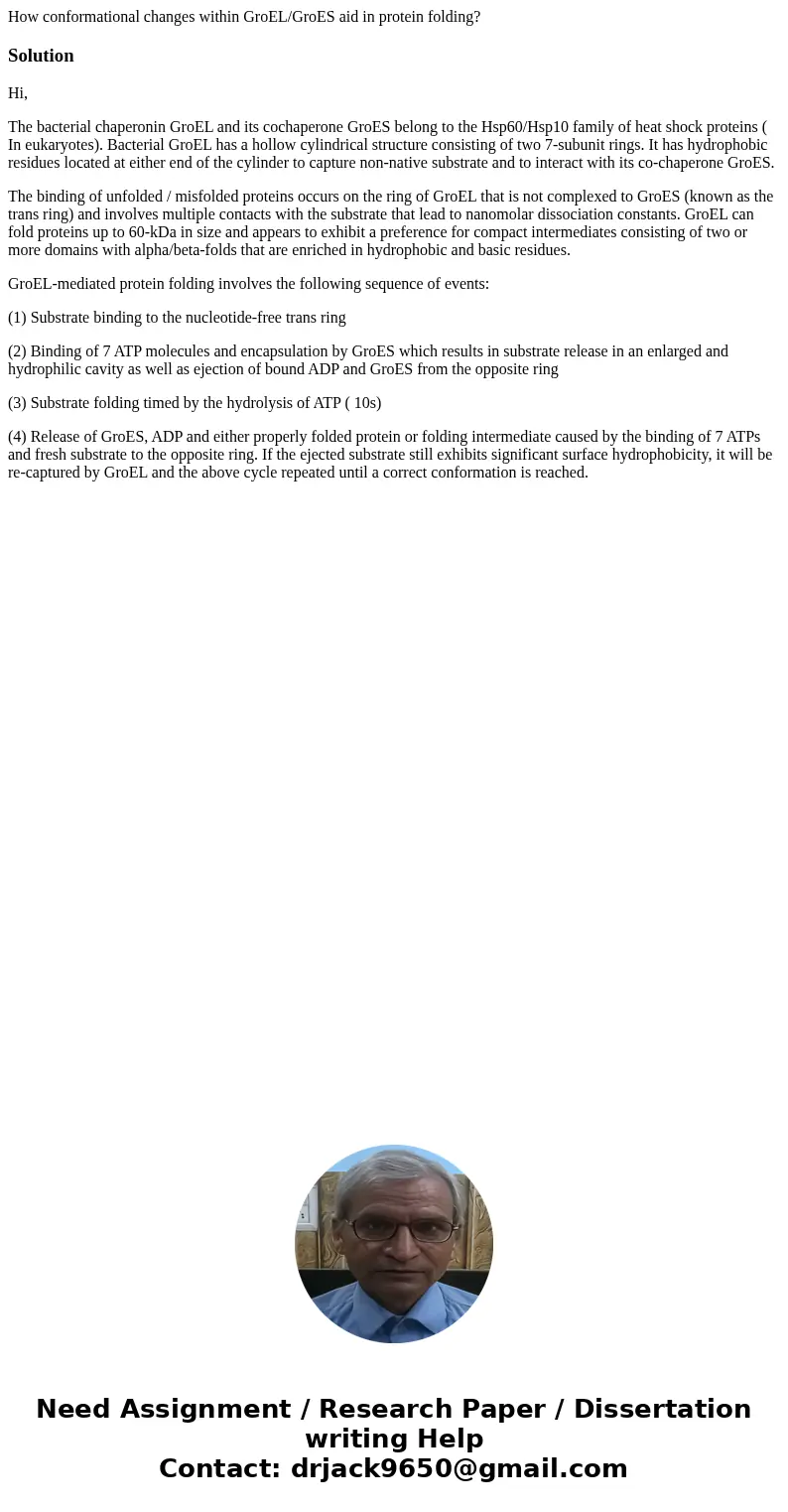How conformational changes within GroELGroES aid in protein
How conformational changes within GroEL/GroES aid in protein folding?
Solution
Hi,
The bacterial chaperonin GroEL and its cochaperone GroES belong to the Hsp60/Hsp10 family of heat shock proteins ( In eukaryotes). Bacterial GroEL has a hollow cylindrical structure consisting of two 7-subunit rings. It has hydrophobic residues located at either end of the cylinder to capture non-native substrate and to interact with its co-chaperone GroES.
The binding of unfolded / misfolded proteins occurs on the ring of GroEL that is not complexed to GroES (known as the trans ring) and involves multiple contacts with the substrate that lead to nanomolar dissociation constants. GroEL can fold proteins up to 60-kDa in size and appears to exhibit a preference for compact intermediates consisting of two or more domains with alpha/beta-folds that are enriched in hydrophobic and basic residues.
GroEL-mediated protein folding involves the following sequence of events:
(1) Substrate binding to the nucleotide-free trans ring
(2) Binding of 7 ATP molecules and encapsulation by GroES which results in substrate release in an enlarged and hydrophilic cavity as well as ejection of bound ADP and GroES from the opposite ring
(3) Substrate folding timed by the hydrolysis of ATP ( 10s)
(4) Release of GroES, ADP and either properly folded protein or folding intermediate caused by the binding of 7 ATPs and fresh substrate to the opposite ring. If the ejected substrate still exhibits significant surface hydrophobicity, it will be re-captured by GroEL and the above cycle repeated until a correct conformation is reached.

 Homework Sourse
Homework Sourse